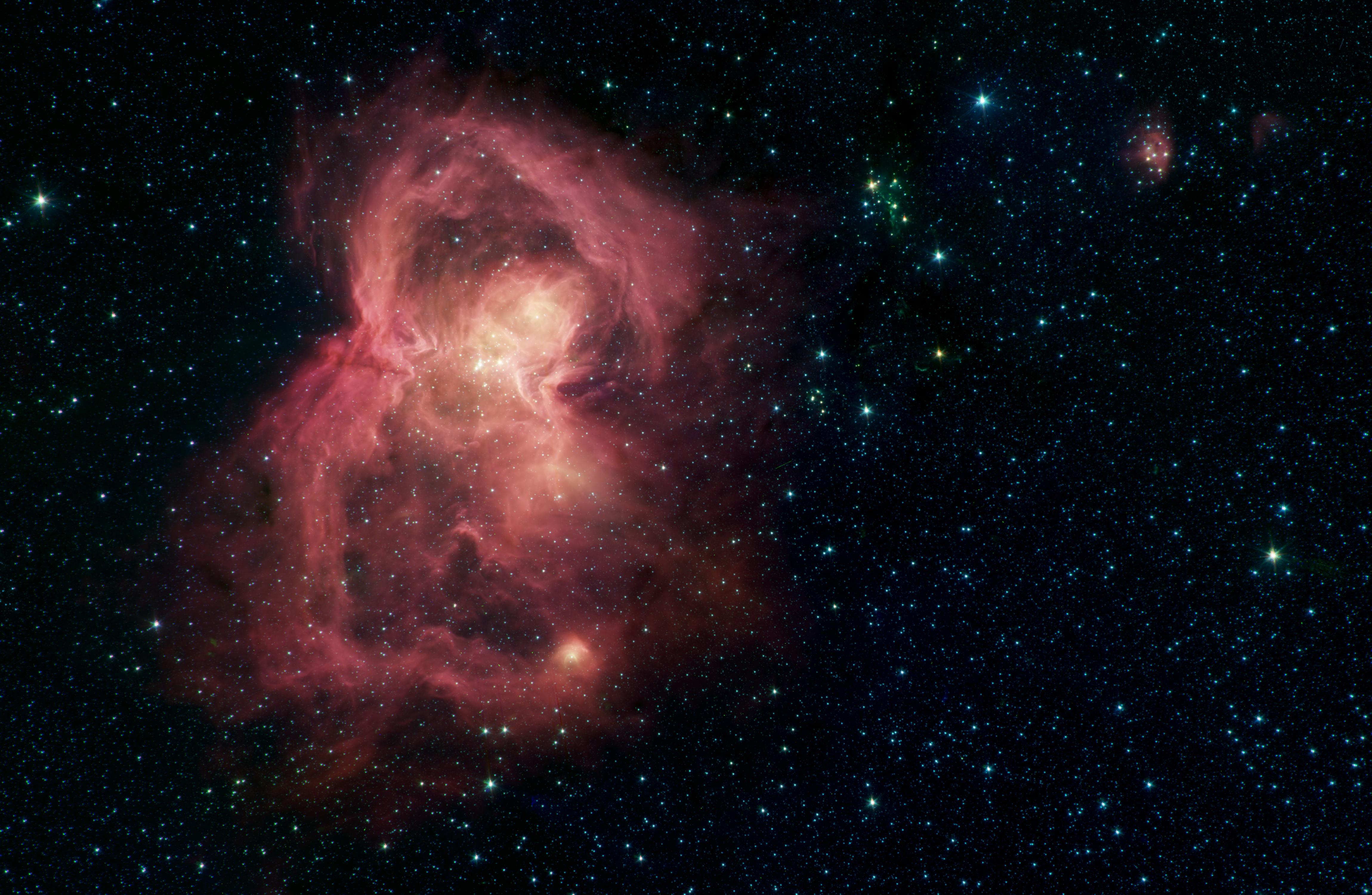
NASA’s Spitzer Space Telescope was launched in 2003 and was supposed to only be on its mission for two and a half years. But remarkably enough, 16 years later the little telescope that could is still going. Now astronomers working with the data the telescope recorded have shared this infrared image of a beautiful nebula that acts as a nursery for baby stars.
The nebula is named Westerhout 40 (W40), and has been nicknamed the Butterfly Nebula because its shape looks like the wings of a butterfly. The giant cloud of dust and gas is a space in which new stars are formed, and the “wings” of the butterfly were created when the hottest stars in the middle of the nebula blow off warm interstellar gas, forming enormous bubbles.
The picture is a composition of four images taken by Spitzer using its Infrared Array Camera (IRAC) during the prime phase of its mission. The images were taken at different wavelengths of infrared light in order to capture the different chemical features of the nebula. The wavelengths captured were 3.6, 4.5, 5.8 and 8.0 μm (shown as blue, green, orange, and red respectively).
In the image you can see lots of activity in the 8.0 μm wavelength, shown in red. This is caused by polycyclic aromatic hydrocarbons (PAHs), compounds containing only hydrogen and oxygen, which are excited by interstellar radiation and give off infrared light at this wavelength. The blue-tinted specks are stars which give off infrared radiation at a lower wavelength, and some very young stars are surrounded by clouds of dust which give off infrared radiation shown in yellow.
New stars are born in the nebula when clouds of dust and gas experience gravitational forces which pull them together into clumps. If they are dense enough, these clumps can form a star in their center. But this very process leads to stars giving off strong stellar winds which push the gas and dust away, breaking up clumps and preventing new stars from forming. This is what gave rise to the butterfly wings, as massive stars ten times the size of our Sun are formed in the center of the nebula and eject material outwards to form the bubbles.



